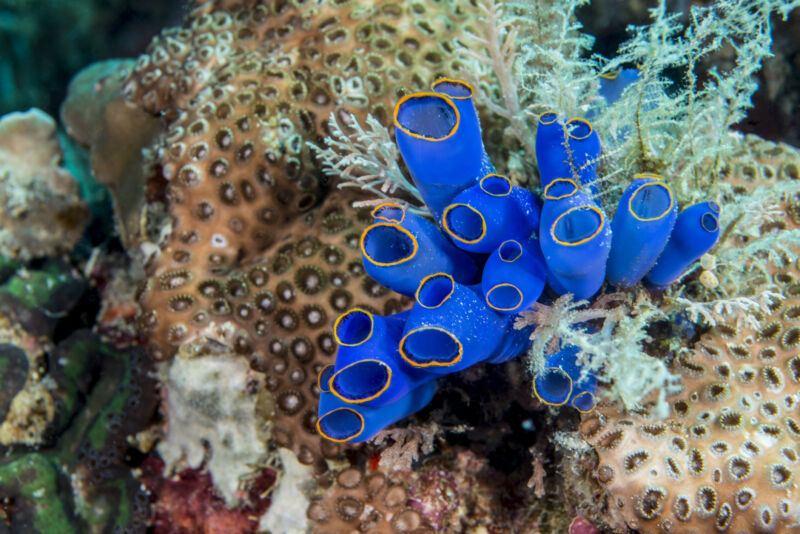
Enlarge / That blue tube is actually a very close relative of vertebrates. (credit: Gerard Soury)
Beneath the waves, there are strange, almost alien creatures that raise questions about the evolution of life on Earth and our own earliest origins. The answers might be hiding in tunicates.
Tunicates are filter-feeding invertebrates that include sea squirts and salps. The more common ascidiacean species are sessile and attach to rocks or the seafloor, while the appendicularian species swim freely. Yet all of them spawn as larvae that vaguely resemble tadpoles. Motile tunicates tend to grow into something that looks like a larger version of the larva. The others eventually faceplant onto a surface and absorb their own tails while morphing into a sessile, tubelike form with two siphons.
Despite all this weirdness, there is now strong evidence that tunicates are the closest relatives to vertebrates, but a mystery still surrounds them. How did they evolve, and what did they evolve from? A 500 million-year-old fossil is now telling us more about the evolution of these peculiar life forms.
No comments:
Post a Comment